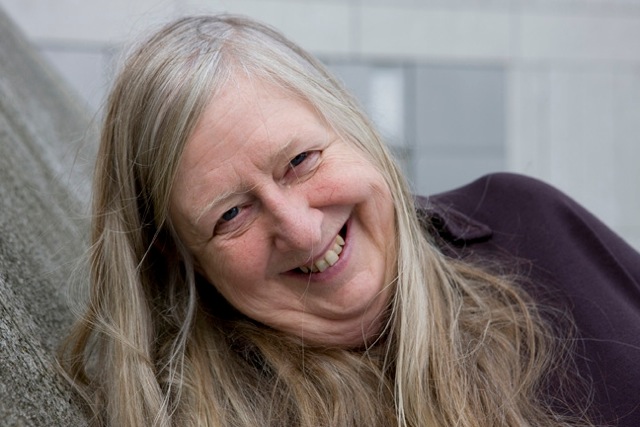Your weekly poem, Mar. 31: “The Nave” by Eiléan Ní Chuilleanáin

A poem selected by our director Nicholas Allen, Baldwin Professor in Humanities
Dear friends,
I have been thinking this past week about literature in all our times of crisis, which reminded me, in usual roundabout fashion, of the time I slept with Samuel Pepys’s chair (we happened to share a room in Magdalene College in Cambridge, but more about that another time). Pepys is best remembered now for his diaries, some of which record his experience of London during a plague, and after that the great fire. If words cannot give back what life takes, they can make what lasts beyond, which is, to me, one proof of our constant, shared concern.
As I wondered then which poem to share with you this week in face of all that stands before us I thought of Eiléan Ní Chuilleanáin’s “The Nave,” which is collected in The Sun-Fish. Like many of you who keep Cortona close to heart, Eiléan has a deep love for the Italian countryside, where she has summered for many years. She is also steeped in the languages and cultures of early modern Europe, not least of which is Irish. You can hear a sample of her reading here.
“The Nave” is her account of a solitary journey through an Italian hill-town celebrating a religious procession in the summer heat. Moving through the crowds to quietude in a cool church, she has a vision of poetry that is of the light, the air, and the sea, the nave, after all, being in the Christian tradition built in the structure of a boat. I love this poem for its lift, which is hard-won and quietly joyous, for its vision, which elevates a single moment into something more and deeper, and for its solidarity, with the sick as with the celebrant.
This is one to think about for a week and more. In that time, as always, I send greetings of peace and friendship,
Nicholas
“The Nave”
by Eiléan Ní Chuilleanáin
Learning at last to see, I must begin drawing;
I cast abroad the line
That noses under stones, presses around an instep,
Threads off into distance and forward again
As it pierces and drags. Like a daft graph it shoots
Up, like a weed falls and rises. I am led, I find it
Looped on every crooked corbel. Drowned in deep shadows
I catch myself in a tangle of rickety laneways,
Part of a procession. The streets
are full of innocence, a stumbling,
Cobbled bazaar of shining bargain treasures,
Their shimmer resisting the eye,
Remotely the four-four beat of the carnival march
Pulls me aside, adrift on the stepped descent –
A fresh smell from the lemonade stall announces
The square transformed. The trinkets dangle,
Ribbons wrap round and round the colored poles,
The air darkens, fairy lights burst out on wires;
The line calls me upwards, curving banisters,
Their metal studs too nearly worn away,
Come to a point where a little troop,
All brightly masked, waits for more companions
Before the steeper climb.
It is cooler here:
Darkish stone, slate, a marble well, a ramp
With a squashed feather stuck to one side, then old,
Clean tiles. I am drawn, staggering –
It feels like lifting a tall, swaying ship
With wind-filled streamers –
Across the threshold.
And indeed the nave
Hums like a ship, the corded masts and spars
Are tugged by wind, and the uppermost gallery
Swings and revolves. The hanging censer
Vibrates like a spider in his thread. In the rigging clings
A saint whose cure is personal as a song
Performed aloud at a wake by a special call,
Or softly to a patient in her hospital ward.
